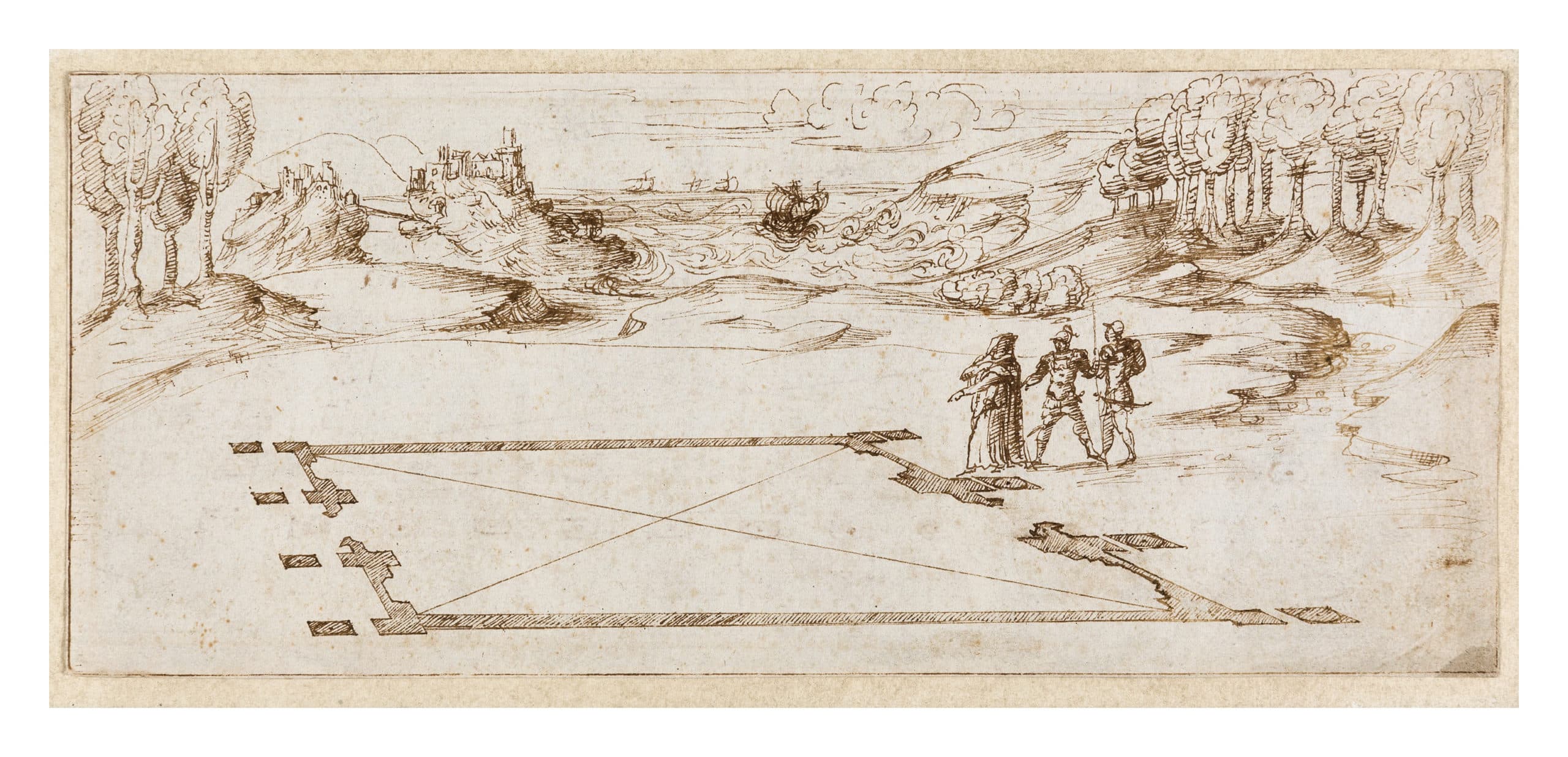On Origins and Originality
The following text by Niall Hobhouse is included in the exhibition catalogue for Begin Again. Fail Better: Preliminary Drawings in Architecture. The exhibition, previously shown at the Kunstmuseum in Olten, opened at EPFL on the 5th of November and will close on the 2nd of December 2024. It includes nearly 100 drawings from the Drawing Matter Collection.




These four drawings were made for publications written to promote both the agency of architecture and of the architect as an individual agent. Taken together, they illustrate the familiar, impossible dance of architectural history and practice that wavers between the borrowed authority of the origin myths and the assertion of individual authorship (or, indeed, of ego). On the one hand, architecture must claim honourable descent from its formal precursors, on the other, the individual architect is locked in competitive ascent against their peers.
Over the three and a half centuries before 1800, in which these drawings were made, we can see an evolution in thinking, if not any convincing solution. Aristippus, as he discovers the ichnographia of an amphiprostyle temple (as a projection, or already as a ruin?), does so as a philosopher and not as an architect—although he has been brought by the draftsman to Rhodes to lend authority to a text by Vitruvius himself. Vignola is unconvincing, displayed proudly by a Muse surrounded by the ancient fragments of Greek and Roman buildings for which it is claimed he is our modern interpreter. Laugier and his illustrator Eisen advance a radical narrative of the tectonic origins of architecture in which—confusingly—their Muse reclines awkwardly on the ruined fragments of buildings that are yet to be built. Petitot takes convenient refuge in self-ridicule. Architecture, absurdly encumbered by history, is smiling broadly at its decline from clever rhetoric to fancy dress. Or, perhaps, simply the overture for the entrance of the star architect?
Niall Hobhouse is the Director of Drawing Matter; he collects drawings by architects, curates exhibitions and writes about buildings, landscapes and museums.
